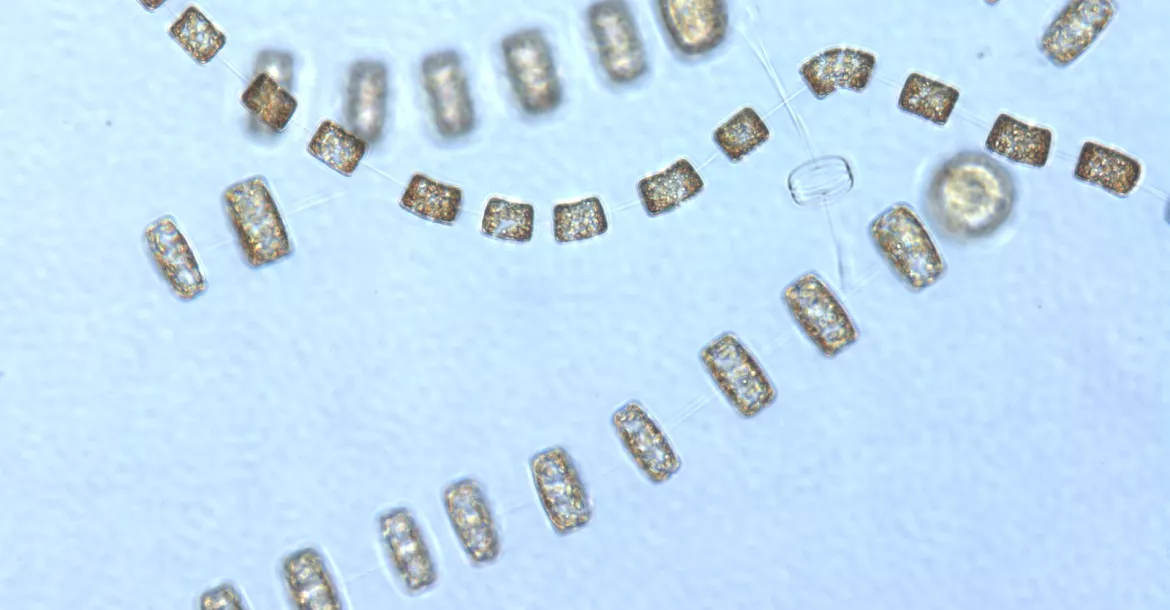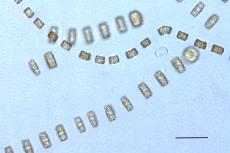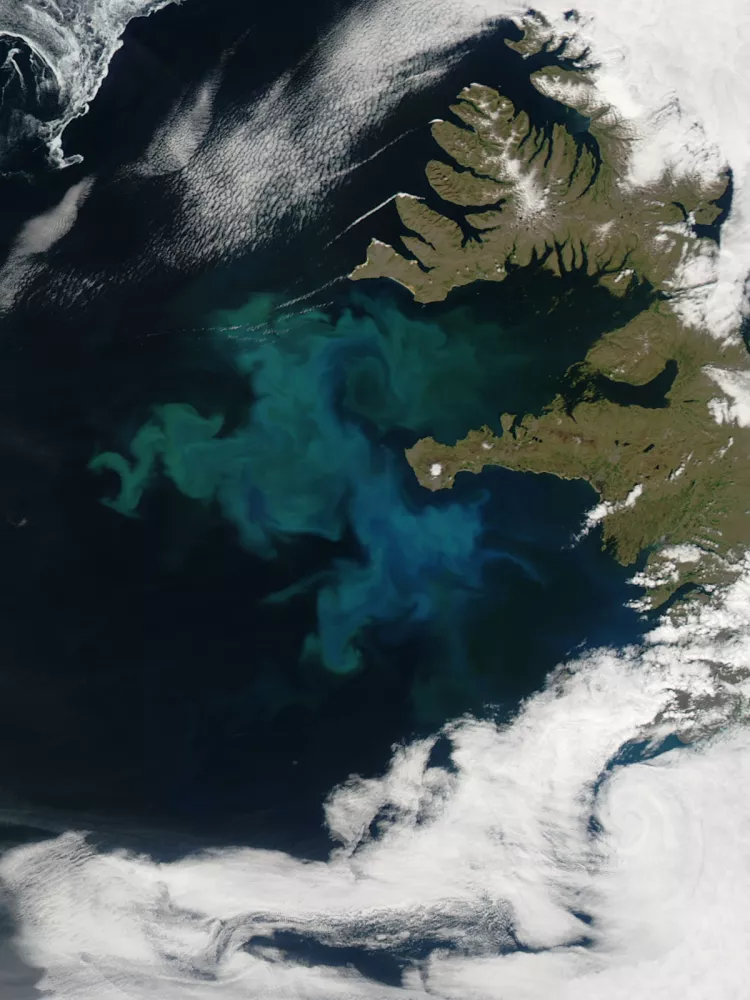Plankton blooms get sucked into the abyss by eddies
Each spring, massive blooms of microscopic plants (phytoplankton) unfold in the North Atlantic Ocean from Bermuda to the Arctic. But what eventually happens to these tiny plants?
Scientists used a float to follow a patch of seawater off Iceland. They observed the progression of the bloom by taking measurements from multiple platforms. Autonomous gliders outfitted with sensors were used to gather data such as temperature, salinity and information about the chemistry and biology of the bloom—oxygen, nitrate, chlorophyll and the optical signatures of the particulate matter.
At the onset of the bloom and over the next month, four teardrop-shaped sea gliders will gather 774 profiles to depths of up to 1,000 meters (3,281 feet).
Oceanic whirlpools
"What we were seeing was surface water, rich with phytoplankton carbon, being transported downward by currents on the edges of eddies," says Amala Mahadevan of the Woods Hole Oceanographic Institution. "Eddies hadn't been thought of as a major way organic matter is moved into the deeper ocean. But this type of eddy-driven 'subduction' could account for a significant downward movement of phytoplankton from the bloom."
Global models of the ocean's carbon cycle
The scientists also hope to quantify the transport of organic matter from the ocean's surface to its depths in regions beyond the North Atlantic and at other times of year, and relate that to phytoplankton productivity. Learning more about eddies and their link with plankton blooms will allow for more accurate global models of the ocean's carbon cycle, the researchers say, and improve the models' predictive capabilities
- Log in to post comments




























